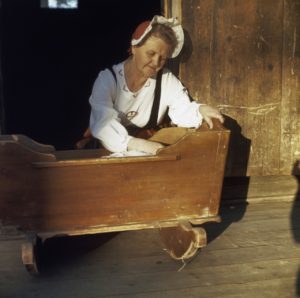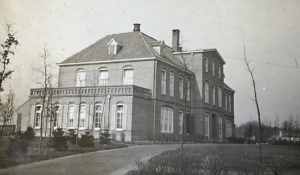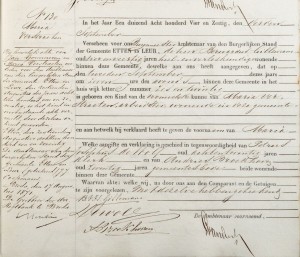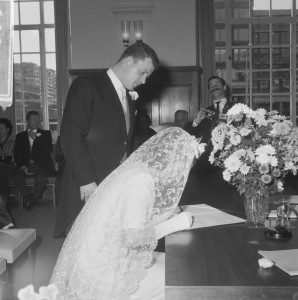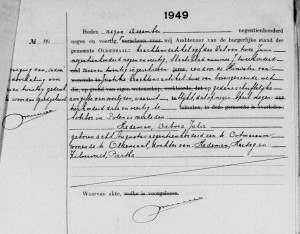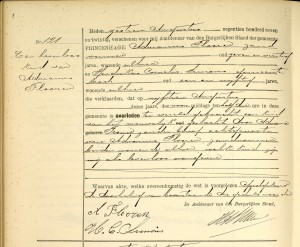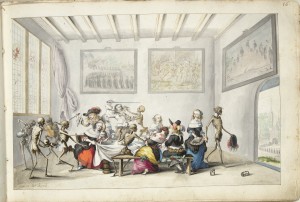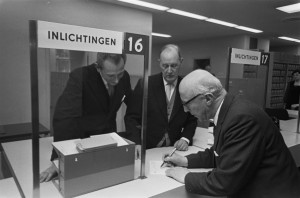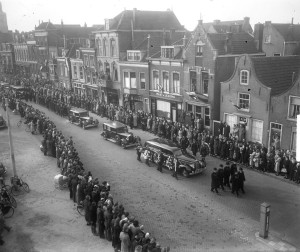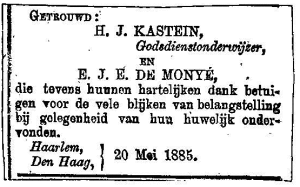Doodgeboren, literally "born dead," is the Dutch word for stillborn. Since the introduction of the civil registration, stillborn children who were born after 24 weeks of pregnancy only received a death record. As of 19 September 2016, parents can now also request that a birth record is drawn up. … [Read more...]
Record Analysis Example – Dutch Death Record
Learning how to analyze a record is one of the most valuable skills we need to learn as a genealogist. To give you an example of how this works, let's take a look at the death record of my second great-grandfather Gerrit Jan van Nijkerken. Abstract: Warnsveld, 10 March 1924. Marinus August George Schoute, 37, overseer, living here, and Gerrit Pelgrum, 51, laborer, declare that on eight [corrected from six] March 1924 at 5.30 PM [corrected from 8.30 PM] died in a house in Warnsveld ward … [Read more...]
Quick tip – Don’t confuse the date of the record and the event
Births and deaths are created within several days of the event. The first date that you will find in the birth record or death record is the record date. Further down in the record, you will find the actual birth or death date, which could have been up to five days earlier. Indexes sometimes only have the record date, so make sure to always check the original record. Marriages were recorded on the day of the marriage, so there is no difference between the date of the event and the record … [Read more...]
How Civil Registration Records were Created
If you are researching nineteenth and twentieth century Dutch ancestors, the civil registration records of births, marriages and deaths are among the first sources you should consult. Understanding how these records were created will help you assess their reliability. Birth records When the civil registration was introduced nation-wide in 1811, the law required that baby be presented at town hall, to make sure that a birth actually took place. Since this could be dangerous to the child, … [Read more...]
Quick tip – Deaths are recorded in the place of residence
If a person died in a different location than where he lived, the civil registration of his place of residence would also record his death. Often, they would receive a copy of the death record that was created in the place of death, and would then record that copy in their own death registers. This was also done after World War II, to record all the Dutch Jews who were murdered in Eastern Europe. Sometimes it took many years to find out where and when a person died, so many towns have death … [Read more...]
Dutch term – Overlijdensakte
An overlijdensakte is a death record. In most of the Netherlands, deaths have been recorded in death records of the civil registration since 1811. Before that, burial records kept by the churches are usually the best information available for finding out when someone died. Read more about death records. … [Read more...]
Dutch term – Dood
The word Dood means dead or deceased. Information about deaths can be found in death records (after 1811) or burial records (before 1811). In most cases, it will not be possible to find a cause of death. … [Read more...]
How to obtain certified copies of birth, marriage or death records from the Netherlands
I often receive requests by people who need to obtain official certificates of Dutch birth, marriage or death records for legal purposes. Obtaining certified copies is not a service I provide, so I will give you the instructions on how to do this yourself. Reasons for needing a certified copy There may be several reasons why you need an official extract of a birth, marriage or death record in the Netherlands, for example: You were born in the Netherlands and need proof of your birth in … [Read more...]
Dutch term – Begrafenis
A begrafenis is a burial. Before 1811, the church records of burials are often the best source for the burial date. Some registers include the death date as well. After 1811, death records of the civil registration show when a person died, but they do not contain information about the burial. That information can sometimes be found in family announcements in newspapers or in the burial administration of the churches. … [Read more...]
Source: Family announcements
In the Netherlands, there has never been a tradition of writing biographical obituaries like you see in countries like the United States. Instead, "familieberichten" [family announcements] simply announce the death of a person. In the 19th century, only more affluent people had a familiebericht placed in the paper. It was usually very short and only signed by the closest relative, typically the spouse or eldest son. In the 20th century, the announcements became a bit more informative and … [Read more...]
